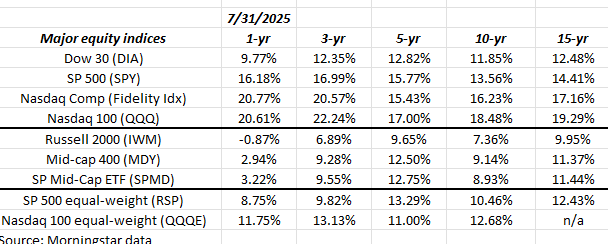Navigating the Ebb and Flow of Markets: Insights from Historical Cycles to Future Potentials
During the sweltering months of summer, when financial advisors and clients traditionally convene to assess performance and strategise, a significant portion of the discussions in recent sessions, particularly this summer and the preceding January ’25 meetings, has been dominated by contemplations on the ongoing 15-year secular bull market. The discourse naturally veers into speculative realms concerning the longevity of this bullish phase and the characteristics of the subsequent market that might emerge post-peak.
Deciphering Market Dynamics: A Historical Perspective
The aftermath of World War II in 1945 brought with it a wave of pessimism among economists who anticipated a reversion to the economic downturns experienced during the Great Depression, exacerbated by the return of countless troops to a market with seemingly no employment opportunities. Contrary to these grim forecasts, the market, spearheaded by the Dow Jones Industrial Average (DJIA), embarked on a remarkable bullish journey from 1942 through 1965, which was only briefly interrupted before embarking on another significant surge from 1982 to 2000.
This remarkable era between 1942 to 1965 saw the DJIA flourish, largely unimpeded until it plateaued, entering a phase of relative stasis over the next 15 years. It’s crucial to note that the catalytic moment for this post-World War II bull market is commonly traced back to May 1942, following the tumult of Pearl Harbor in December 1941, marking the commencement of an extraordinary recovery and growth trajectory.
Transitioning to the period from 1965 to 1980, the United States found itself grappling with a multitude of crises including the prolonged Vietnam War, the Watergate scandal under President Nixon, an unprecedented escalation in gasoline prices triggered by the Arab Oil Embargo, and the Iranian Hostage Crisis towards the decade’s close. These tumultuous events cast a shadow over the nation, culminating in the S&P 500’s first significant 50% bear market during 1973-1974, a period clouded by constitutional crises and political upheaval.
The dawn of 1982 heralded the beginning of the most prolific bull market in U.S. history, a period marked by substantial technological advancements, the proliferation of personal computing, and the dawning of the internet era, climaxing with the Netscape IPO in 1995. This period, stretching until the year 2000, was unparalleled in terms of economic and financial wealth creation in the U.S., underscored by an 18-year bull market that reshaped the financial landscape.
The Echoes of the Past: Comparing Bull Markets
As we draw parallels between the secular bull markets of 1982-2000 and the current cycle post-2009, several notable similarities emerge. Both eras were characterized by significant technological advancements and a predominant focus on the tech sector, which commanded a substantial proportion of the S&P 500’s market cap weight. The late 20th-century bull market was propelled by the burgeoning field of corporate technology, from personal computers to the internet explosion, while the current bull market is significantly influenced by advancements in artificial intelligence and consumer tech, notably led by companies like Apple with their revolutionary iPhone and iPad.
Yet, despite these parallels, distinctive differences set the current market apart. Today’s market sentiment fluctuates more rapidly between extremes of greed and fear, a stark contrast to the bullish exuberance of the 90s. Additionally, the current market exhibits a more robust quality of earnings, underscored by a closer alignment between a company’s market cap and its earnings weight, reflecting a healthier financial ecosystem.
Looking Ahead: Navigating Uncertainty
As we stand on the cusp of potentially transitioning market phases, it’s essential to reflect on the cyclical nature of markets and the lessons they impart. Histories of bull and bear cycles not only provide us with insights into patterns of economic and financial evolution but also offer a blueprint for navigating future uncertainties.
While it’s tempting to engage in the pursuit of returns, prudence and strategic diversification remain paramount, as emphasized in discussions surrounding portfolio construction. The inclusion of “non-correlated” assets, such as emerging markets or underperforming stocks like Nike, Cisco, and Intel, serves as a strategy to mitigate risk and enhance resilience amidst market volatility.
In Conclusion
As we ponder the future trajectory of financial markets, it’s crucial to adopt a balanced perspective, informed by historical insights and attuned to the evolving dynamics of the global economy. The cyclical nature of markets necessitates a forward-looking strategy that embraces adaptability and prudent risk management, ensuring that investors are well-positioned to capitalize on opportunities while safeguarding against uncertainties.
Disclaimer
It’s imperative to underscore that the insights and analyses presented herein are based on personal opinions and historical observations and should not be construed as financial advice. Market dynamics are inherently unpredictable, and past performance is not a reliable indicator of future outcomes. Investors are encouraged to conduct thorough research and consult with professional advisors to align their investment strategies with their individual risk tolerance and financial objectives.
Thank you for engaging with this exploration of market cycles and investment strategies. Your proactive approach to understanding and navigating the complexities of financial markets is commendable and essential for achieving long-term success.



